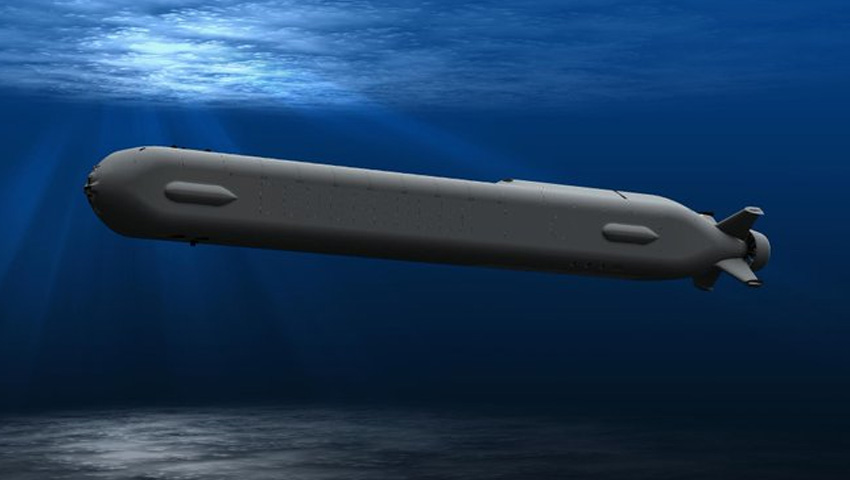Defence should consider procuring unmanned Boeing-built ‘Orcas’ to shore-up Navy’s undersea warfare capability ahead of the delivery of the Attack Class submarines, according to one analyst.
To continue reading the rest of this article, please log in.
Create free account to get unlimited news articles and more!
The Commonwealth government’s $80 billion SEA 1000 (Future Submarines) program has come under intense scrutiny over the past few years.
Observers have accused the government of concealing a cost blow-out, with the program initially valued at $50 billion.
Critics have also questioned the delivery timeline, with all 12 Attack Class submarines — ordered to replace the ageing Collins Class fleet — not expected to be fully-operational until 2054.
Additionally, a cloud looms over the level of Australian defence industry participation in the program, with reports suggesting that French contractor Naval Group is yet to reach terms with the federal government.
In lieu of this uncertainty, some observers have called for the program to be axed and replaced.
But if the Commonwealth government chooses to retain the program, how can Defence address potential capability gaps ahead of the delivery of the Attack Class fleet?
Michael Shoebridge, director of the defence, strategy and national security program at the Australian Strategic Policy Institute (ASPI), argues that the government should consider procuring the ‘Orca’ — an extra-large unmanned undersea vehicle developed by Boeing and Huntington Ingalls Industries for the US Navy.
Five Orcas are scheduled to be built by the end of 2022 as part of a US$274 million ($354 million) contract signed in 2019.
“The unmanned submarine has a range of about 6,500 nautical miles (12,000 kilometres) and can perform dangerous, dirty and dull work like intelligence-gathering, surveillance and deployment of other systems (such as smart sea mines), with a development path up to and including deployment of other weapons to attack adversary ships, submarines and other systems,” Shoebridge writes.
“They will probably work best as part of a manned–unmanned undersea team, less closely tethered but a bit like the rapidly developed ‘Loyal Wingman’ unmanned aerial vehicle that the Royal Australian Air Force is developing and testing with Boeing Australia.”
Shoebridge concedes that there would be “plenty to work out” to ensure the Royal Australian Navy can operate Orcas effectively, but notes there’s a “practical limit” to how much planning and preparation can be done with experiments and demonstrations.
“Concepts for use and ways to resolve difficult problems like tasking and controlling undersea systems will be resolved much faster once navy personnel get their hands on live systems; that’s what’s happened throughout the history of warfare,” he writes.
The ASPI analysts proposes that the RAN collaborate with US Navy, along with US and Australian industrial partners, to develop the Orca, adding that this would “bring the most undersea combat power most quickly to Australia’s military”.
He continues: “It’s also the best way for Defence to create new challenges for adversaries that are thinking of coercing Australia or increasing their military presence in Australia’s near region.”
Shoebridge goes on to write that Orcas working with upgraded Collins Class submarines would “change the calculus around Australian defence well before the first Attack Class boat turns up”.
This, he claims, would also ensure the Future Submarine and its crews are “designed and prepared” to operate with unmanned systems.
Shoebridge argues that Defence has an opportunity to negotiate an attractive deal for the Orca with Boeing, with its commercial business severely impacted by travel restrictions imposed in response to the COVID-19 pandemic.
“Combine this with the confidence that working with Boeing Australia on the Loyal Wingman must be giving both the government and Defence,” he adds.
Shoebridge concludes: “The US Navy’s example of spending US$274 million to acquire five Orcas that are all being delivered within three years of contract shows the affordable, rapid change that Australia joining this program could bring to our own naval capability.
“Wouldn’t it be welcome to have some fast-moving good news out of Defence when it comes to submarines? It’s time to push Defence to move faster than it will left to itself.”
Get involved with the discussion and let us know your thoughts on Australia's future role and position in the Indo-Pacific region and what you would like to see from Australia's political leaders in terms of partisan and bipartisan agenda setting in the comments section below, or get in touch with
Charbel Kadib
News Editor – Defence and Security, Momentum Media
Prior to joining the defence and aerospace team in 2020, Charbel was news editor of The Adviser and Mortgage Business, where he covered developments in the banking and financial services sector for three years. Charbel has a keen interest in geopolitics and international relations, graduating from the University of Notre Dame with a double major in politics and journalism. Charbel has also completed internships with The Australian Department of Communications and the Arts and public relations agency Fifty Acres.

 Login
Login








